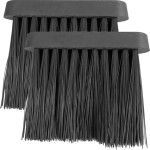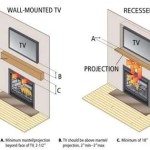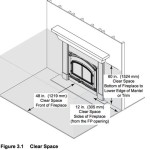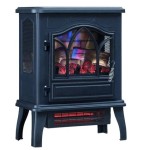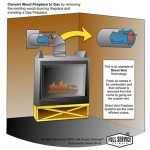Fireplace Gas Stove Inserts: A Comprehensive Guide
Fireplace gas stove inserts provide a functional and aesthetically pleasing solution for heating homes. They are designed to fit directly into existing fireplaces, transforming them into efficient and convenient heat sources. This article explores the various aspects of fireplace gas stove inserts, including their benefits, types, selection criteria, installation procedures, and maintenance requirements.
A fireplace gas stove insert is a self-contained heating appliance that utilizes natural gas or propane to generate heat. It is engineered to be installed within the firebox of an existing masonry or prefabricated fireplace. Unlike traditional wood-burning fireplaces, gas inserts offer precise temperature control, reduced emissions, and ease of operation. These units are typically constructed from cast iron or steel and feature a glass front that allows for viewing of the flames.
Advantages of Choosing a Fireplace Gas Stove Insert
One of the primary advantages of a gas insert is enhanced heating efficiency. Traditional open-hearth fireplaces are notoriously inefficient, often losing more heat up the chimney than they radiate into the room. Gas inserts, on the other hand, are designed to maximize heat output while minimizing heat loss. Sealed combustion systems draw air from outside the home and vent exhaust gases directly outdoors, preventing the loss of warm air from the living space. This results in significant energy savings and lower heating bills.
Another key benefit is convenience. Gas inserts eliminate the need for storing, hauling, and chopping firewood. A simple switch or remote control provides instant heat at the desired temperature. Many models also feature programmable thermostats, allowing users to set consistent temperatures and heating schedules. The ease of operation makes gas inserts an attractive option for homeowners seeking a hassle-free heating solution.
Environmental considerations also favor gas inserts over wood-burning fireplaces. Gas combustion produces significantly fewer emissions than burning wood, contributing to cleaner air quality. Gas inserts typically meet stringent emission standards set by regulatory agencies, reducing the release of particulate matter and other pollutants into the atmosphere. This is particularly important in areas with air quality concerns or restrictions on wood-burning appliances.
Safety is another important aspect. Gas inserts are equipped with safety features such as flame sensors and automatic shut-off valves. These mechanisms prevent gas leaks and ensure safe operation. Furthermore, the sealed combustion system minimizes the risk of carbon monoxide poisoning, a potential hazard associated with wood-burning fireplaces that aren't properly maintained. The controlled environment of a gas insert offers a safer heating alternative compared to the open flames of a traditional fireplace.
Types and Features of Fireplace Gas Stove Inserts
Fireplace gas stove inserts are available in various styles, sizes, and heat output capacities. Venting options also differ, influencing the installation requirements and overall performance of the unit. Understanding these variations is crucial for selecting the right insert for a specific home and heating needs.
Direct vent inserts are the most common type. They draw combustion air from outside the home and exhaust combustion gases directly outdoors through a sealed vent system. This type of insert offers the highest efficiency and safety, as it prevents the introduction of combustion byproducts into the living space. Direct vent systems can be vented horizontally or vertically, providing flexibility in installation options.
Vent-free inserts, also known as ventless inserts, do not require an external vent. They draw air from the room and release combustion gases back into the room. While vent-free inserts offer easier installation, they are generally less efficient and require careful monitoring of indoor air quality. Building codes in some areas may restrict or prohibit the installation of vent-free appliances. It is imperative to consult with local authorities and qualified professionals before considering a vent-free option.
B-vent inserts use the existing chimney to vent combustion gases. They require a larger chimney flue compared to direct vent inserts and are typically less efficient. B-vent inserts are generally less expensive than direct vent models but may require chimney modifications to ensure proper venting. Careful inspection of the existing chimney is essential to determine its suitability for a B-vent insert.
Beyond venting options, gas inserts offer a range of features. Variable flame height controls allow users to adjust the intensity and appearance of the flames. Thermostatic controls maintain a consistent room temperature. Remote controls provide convenient operation from anywhere in the room. Decorative options include realistic log sets, glass media, and various finishes to complement the home's decor. Some models even incorporate blowers to circulate heated air more efficiently.
Selecting the Right Fireplace Gas Stove Insert
Choosing the appropriate fireplace gas stove insert involves evaluating several factors, including the size of the area to be heated, the existing fireplace dimensions, venting options, budget considerations, and desired aesthetic features. A thorough assessment of these factors will ensure that the selected insert meets the heating needs and integrates seamlessly into the home.
Determining the correct size or heating capacity is crucial. Gas insert heating capacity is measured in British Thermal Units (BTUs). A larger room requires a higher BTU rating to maintain a comfortable temperature. Consult with a heating professional or use online BTU calculators to estimate the appropriate heating capacity based on the room's square footage, insulation levels, and climate conditions. Selecting an undersized insert will result in insufficient heating, while an oversized insert may lead to temperature fluctuations and energy waste.
Accurate measurement of the existing fireplace opening is essential. The gas insert must fit properly within the firebox. Measure the height, width, and depth of the fireplace opening to ensure compatibility with the insert's dimensions. Also, consider the firebox shape and any obstructions that may interfere with installation. Some inserts are designed for specific fireplace shapes, such as rectangular or arched openings. Consulting with a qualified installer is highly recommended to verify compatibility and ensure a proper fit.
Evaluating venting options is another critical step. Determine whether a direct vent, vent-free, or B-vent system is suitable for the home. Consider the location of the existing chimney, the availability of exterior walls for venting, and any restrictions imposed by local building codes. Direct vent inserts offer the highest efficiency and safety but may require more complex installation. Vent-free inserts are easier to install but require careful consideration of indoor air quality. B-vent inserts utilize the existing chimney but may require chimney modifications.
Budgetary constraints also play a significant role. Gas insert prices vary depending on the type, size, features, and brand. Consider the initial purchase cost, installation fees, and ongoing operating expenses. Factor in the cost of venting materials, gas line installation, and professional labor. Compare prices from different retailers and installers to find the best value. Investing in a high-quality, energy-efficient insert can result in long-term cost savings through reduced heating bills.
Finally, consider the aesthetic aspect. Select an insert that complements the home's decor and personal preferences. Choose from various styles, finishes, and log set options. Consider the viewing area and flame appearance. Some inserts offer realistic flames and ember beds, while others feature modern, linear flame designs. Selecting an insert that aligns with the home's aesthetic will enhance the overall appeal and enjoyment of the heating appliance.
Installation of Fireplace Gas Stove Inserts
Proper installation is critical for ensuring the safe and efficient operation of a fireplace gas stove insert. Installation typically involves preparing the fireplace opening, running gas lines, installing venting systems, and connecting the insert to the gas supply. It is highly recommended to hire a qualified and licensed professional to handle the installation process. Improper installation can lead to gas leaks, carbon monoxide poisoning, and other safety hazards.
Preparation of the fireplace opening involves cleaning and inspecting the firebox. Remove any debris, ash, or soot from the firebox. Inspect the chimney flue for cracks, obstructions, or deterioration that may compromise venting performance. Repair or replace any damaged components before installing the insert. Insulating the firebox with a non-combustible material can improve heating efficiency.
Gas line installation involves running a gas line from the main gas supply to the fireplace opening. The gas line should be sized appropriately to meet the insert's gas consumption requirements. Gas line installation must comply with local plumbing codes and regulations. A qualified plumber should perform the gas line installation to ensure proper connections and leak-free operation.
Venting system installation depends on the type of insert selected. Direct vent inserts require the installation of a sealed vent system that draws air from outside the home and vents exhaust gases directly outdoors. Vent-free inserts do not require an external vent, but proper ventilation of the room is essential. B-vent inserts utilize the existing chimney, but chimney modifications may be necessary to ensure proper venting. Venting systems must be installed according to the manufacturer's instructions and local building codes.
Connecting the insert to the gas supply involves making secure connections to the gas line. Pressure testing the gas connections to ensure no leaks is imperative. The insert should be tested for proper operation, including flame ignition, flame height adjustment, and thermostatic control. A qualified installer should perform a final inspection to ensure that all safety features are functioning correctly.
Maintenance of Fireplace Gas Stove Inserts
Regular maintenance is essential for prolonging the life of a fireplace gas stove insert and ensuring optimal performance. Maintenance tasks include cleaning the glass front, inspecting the venting system, cleaning the burner assembly, and checking for gas leaks. Following the manufacturer's recommended maintenance schedule will help keep the insert operating safely and efficiently.
Cleaning the glass front is a routine maintenance task. Over time, the glass may accumulate soot, dust, or condensation that obscures the view of the flames. Use a glass cleaner specifically designed for gas fireplace inserts to remove these deposits. Avoid using abrasive cleaners or sharp objects that may scratch the glass. Regular cleaning will maintain a clear view of the flames.
Inspecting the venting system is crucial for ensuring proper ventilation. Check for any obstructions, damage, or corrosion in the vent pipes. Clean the vent system periodically to remove any debris or soot buildup. Ensure that all vent connections are secure and leak-free. A properly maintained venting system is essential for preventing carbon monoxide poisoning.
Cleaning the burner assembly involves removing any debris, dust, or carbon deposits from the burner ports. A clogged burner assembly can result in uneven flame distribution, reduced heat output, and potential safety hazards. Use a brush or vacuum cleaner to remove any obstructions from the burner ports. Consult the manufacturer's instructions for specific cleaning procedures.
Checking for gas leaks is an important safety precaution. Use a gas leak detector or a soapy water solution to check for leaks around gas connections and fittings. If any gas leaks are detected, immediately shut off the gas supply and contact a qualified professional for repairs. Never attempt to repair gas leaks without proper training and equipment.

Gas Fireplace Inserts Fireplacesdirect Com

Infrared X3 Xir3 Ambassador Fireplaces

Belmont Small Gas Insert

Gas Burning Fireplace Inserts Sierra Hearth And Home

Gas Fireplace Inserts Lopi Stoves Made In Usa

Fireplace Inserts Wood Gas Pellet

Gas Fireplace Inserts Have An Instant Fire For A More Relaxing Holiday Season Cumberland Ri

Fireplace Inserts Mountain West S

Gas Fireplace Inserts Pros And Cons Of Ventless Fireplaces

Convert To Gas Installing Fireplace Inserts Doctor Flue


